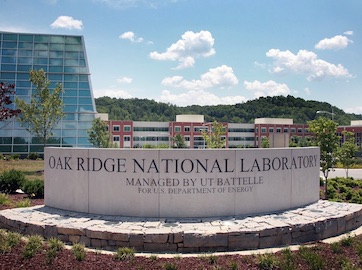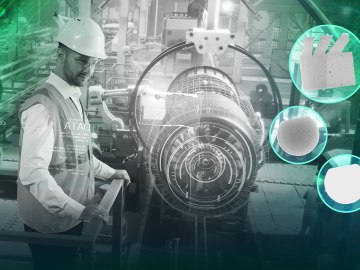Filter Results
Related Organization
- Biological and Environmental Systems Science Directorate (29)
- Computing and Computational Sciences Directorate (39)
- Energy Science and Technology Directorate (229)
- Fusion and Fission Energy and Science Directorate (24)
- Information Technology Services Directorate (3)
- Isotope Science and Enrichment Directorate (7)
- National Security Sciences Directorate (20)
- Neutron Sciences Directorate (11)
- Physical Sciences Directorate (138)
- User Facilities (28)
Researcher
- Ryan Dehoff
- Brian Post
- Michael Kirka
- Venkatakrishnan Singanallur Vaidyanathan
- Vincent Paquit
- Adam Stevens
- Ahmed Hassen
- Alex Plotkowski
- Alex Roschli
- Alice Perrin
- Amir K Ziabari
- Amit Shyam
- Andres Marquez Rossy
- Andrew F May
- Annetta Burger
- Ben Garrison
- Blane Fillingim
- Brad Johnson
- Cameron Adkins
- Carter Christopher
- Chance C Brown
- Charlie Cook
- Christopher Hershey
- Christopher Ledford
- Clay Leach
- Craig Blue
- Daniel Rasmussen
- David Nuttall
- Debraj De
- Diana E Hun
- Gautam Malviya Thakur
- Gina Accawi
- Gurneesh Jatana
- Hsin Wang
- Isha Bhandari
- James Gaboardi
- James Haley
- James Klett
- Jesse McGaha
- John Lindahl
- Kevin Sparks
- Liam White
- Liz McBride
- Mark M Root
- Michael Borish
- Mike Zach
- Nedim Cinbiz
- Patxi Fernandez-Zelaia
- Peeyush Nandwana
- Philip Bingham
- Philip Boudreaux
- Rangasayee Kannan
- Roger G Miller
- Sarah Graham
- Sudarsanam Babu
- Todd Thomas
- Tony Beard
- Vipin Kumar
- Vlastimil Kunc
- William Peter
- Xiuling Nie
- Yan-Ru Lin
- Ying Yang
- Yukinori Yamamoto

Often there are major challenges in developing diverse and complex human mobility metrics systematically and quickly.

We have been working to adapt background oriented schlieren (BOS) imaging to directly visualize building leakage, which is fast and easy.

The technologies provide a system and method of needling of veiled AS4 fabric tape.

High strength, oxidation resistant refractory alloys are difficult to fabricate for commercial use in extreme environments.

ORNL will develop an advanced high-performing RTG using a novel radioisotope heat source.

In manufacturing parts for industry using traditional molds and dies, about 70 percent to 80 percent of the time it takes to create a part is a result of a relatively slow cooling process.

This technology combines 3D printing and compression molding to produce high-strength, low-porosity composite articles.

Simurgh revolutionizes industrial CT imaging with AI, enhancing speed and accuracy in nondestructive testing for complex parts, reducing costs.

